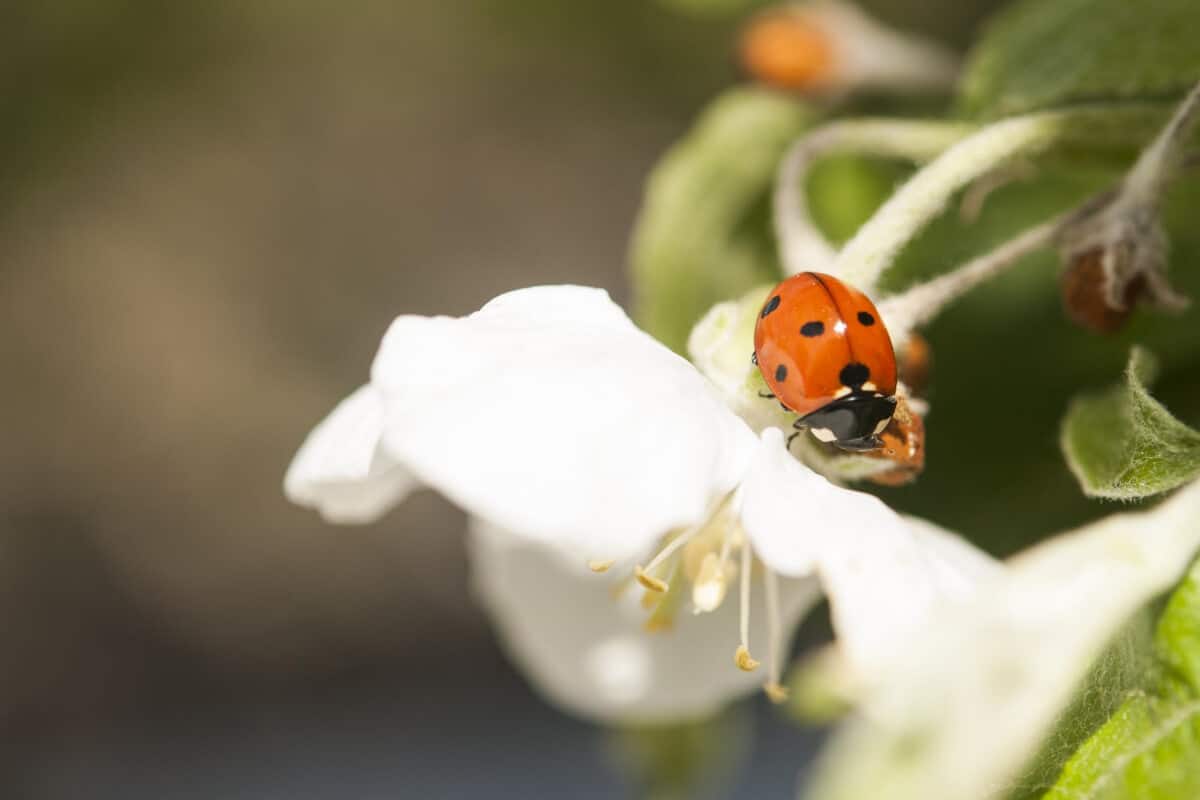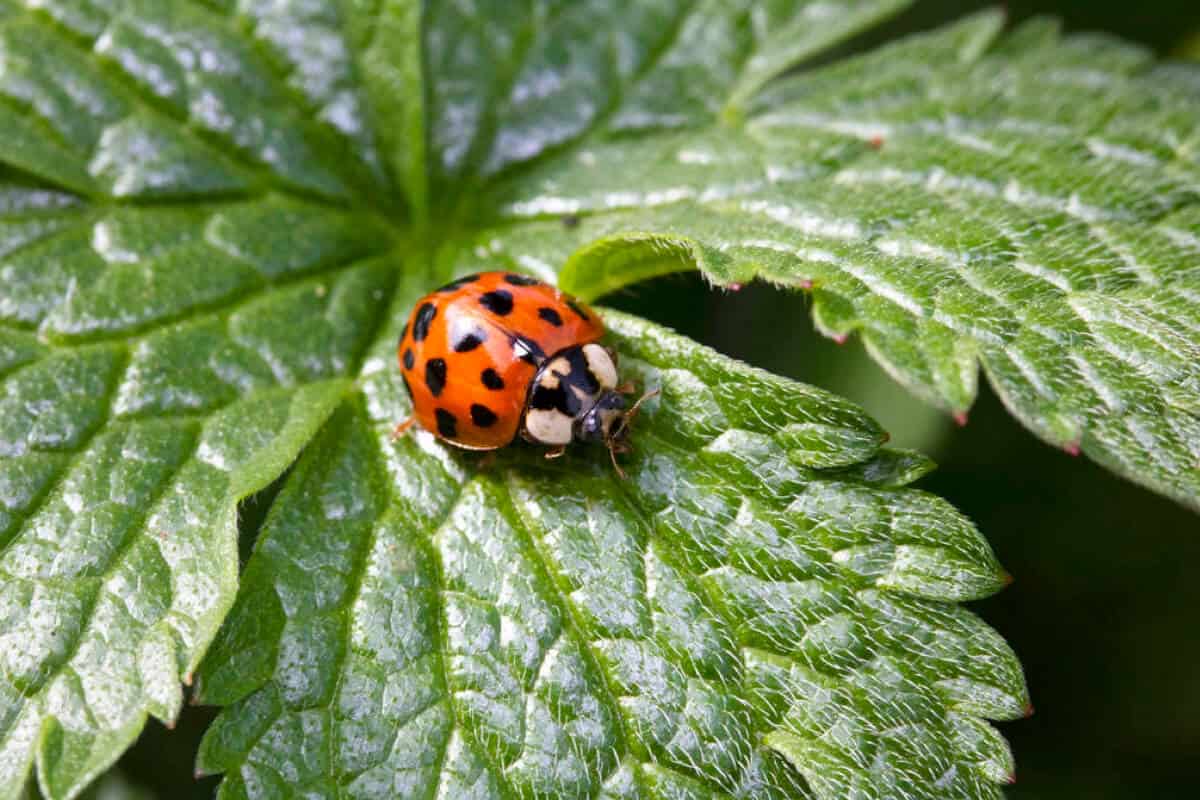Keeping plants inside the house can yield several benefits along with challenges as well. While plants can help in maintaining good air quality, support cognitive health, and improve your well-being, they also invite common pests and insects into your home.
To eliminate these pests, one might consider the easy way out– using pesticides. However, this is not always the best choice as they defeat the benefits that you may reap from houseplants.
One option that you can explore to keep your houseplants healthy, is by keeping ladybugs. These natural predators can be identified by the black spots on their yellow, red, or orange forewings.
But keep your guard up! These pea-sized predators are big consumers of destructive pests like aphids, mites, and scale insects. This makes them ideal for keeping plenty of houseplants safe.
Take note, however, that ladybugs belong to a big family of species called the Coccinellidae and there are over 450 species of ladybugs in North America.
This only means that not all ladybugs function to protect your houseplants from pests. In fact, some non-native species are pests themselves.
If you are curious about how they can be good or bad for your houseplants, you are in luck. This guide about ladybugs will tackle all of that and more.
- Related Article: Ladybird Beetle Fact
Are Ladybugs Good for Houseplants?
Ladybugs and Houseplant Pros
1. They Eat Plenty of Aphids
Aphids might appear as small, harmless insects but they are sure to cause several issues like infections and diseases.
A ladybug’s life cycle revolves around these four stages: egg stage, larvae stage, pupa stage, and adult stage.
Among all these stages, they eat the most in their ladybug larvae stage. During this phase, they can consume their body weight in prey. This gives them the energy to complete their metamorphosis.
An adult ladybug eats less but is still able to consume 50 to 70 aphids in a single day. A single ladybug can consume up to 5,000 aphids in its lifetime.
Read more in this complete guide to Ladybugs for Aphid Control.
2. They Are Generalist Predators
Most native ladybugs are generalist predators. They help in eliminating harmful pests such as aphids, spider mites, mealy bugs, whiteflies, and scale insects.
For example, the lady beetle, Hippodamia Convergens, is a highly preferred specie of ladybug that serves this purpose.
If you are not a fan of generalist predators and would want to control a specific population of pests, there are also ladybug species that can be used to target them.
Ladybugs and Houseplant Cons
1. Asian Ladybug
While most types of ladybugs are helpful to houseplants, you should be careful not to confuse the Asian Ladybug (Harmonia Axyridis) with friendly ladybugs. They might look similar but have vastly different behaviors.
Helpful ladybugs tend to be more solitary and aren’t harmful to humans while Asian ladybugs are the opposite. They congregate in huge numbers during the colder season and can infest houses in search of warmth and shelter.
Not everyone can differentiate between native ladybugs and Asian Ladybugs so most people think that all of them are bad.
While having a few ladybugs indoors to help you control pests can be helpful, a whole swarm of these can be a real nuisance.
Asian Ladybugs can bite and can even cause allergies for some. They also release a yellow substance with an unpleasant odor when scared.
The Asian Lady Beetle can be recognized because of the M-shaped black marking on their white head. They are also larger than ladybugs and have more elongated bodies.
Read more about the differences between Ladybugs vs Asian Beetles.
2. Mexican Bean Beetle and Squash Lady Beetle
The Mexican Bean Beetle (Epilachna Varivestis) and the Squash Lady Beetle (Epilachna Borealis) are two species of ladybugs that are considered to be actual pests and can be harmful to your plants.
Contrary to the vast majority of lady beetles, these two aren’t predatory insects but instead feed on plants.
Can You Have Ladybugs in the House?

While everyone agrees that healthy ladybugs are an asset in the garden, opinions on the benefits of having them indoors widely differ.
Some experts believe that they can be very useful and that people should welcome them and help them to thrive. Some also advise purchasing them and releasing them to control houseplants pests.
If they come naturally, it’s probably because they have found an ideal habitat to stay. They usually prefer moist to warm conditions.
Ladybugs usually leave in the spring and show their gratefulness for having been hosted by decimating the aphid population in your garden.
However, make sure to manage the population of ladybugs inside your home at a time. This is because being big consumers themselves, ladybugs can consume a lot of prey in only a matter of days.
After which, they would then disperse all around the house, becoming a nuisance, or fly away, leaving your plants unprotected through the next aphid infestation.
Ladybugs that are purchased and released indoors might have a hard time adapting to the new condition as well and spend more time next to windows and lights, instead of your plants.
Fortunately, apart from possibly being a nuisance because of their large number, ladybugs aren’t dangerous to you, your house, or your plants.
The only exception is the few species that we’ve already mentioned (Asian Ladybug, Mexican bean beetle, and squash ladybeetle).
How to Attract Ladybugs
Ladybugs often eat the pollen of several plants so if you want to attract them, it might be wise to have these plants outside or inside your house as well. Apart from common garden pests, ladybugs also feast on pollen for food.
1. Scented Geranium – is one of the more resilient and low-maintenance plants that you can grow to attract ladybugs. This plant also repels mosquitoes and other annoying insects.
2. Cabbage – cabbages are an effective aphid-attracting decoy plant that is most inviting to ladybugs. This is because common pests and bugs are usually attracted to cabbages and in turn, provide a steady supply of food to ladybugs.
3. Garlic Flowers – these flowers attract pollinators and beneficial insects like ladybugs. And just like geranium, it also repels pests and insects like flies and mosquitoes. It is easy to cultivate as well.
4. Bachelor’s Button – also known as the “Corn Flower”, this plant belongs to the aster family. It can come in pink, white, and blue flowers and its pollen lures ladybugs of all kinds.
5. Dill – this herb is not only a favorite among chefs but also pollinators and ladybugs
As long as they have ample food or an alternative food source within an area, you are sure to keep these natural predators in check and make not only your garden ladybug friendly but also your home.
An additional tip to attract ladybugs is to make a ladybug feeder.
Learn more about What Attracts Ladybugs to Your Garden.
How to Get Rid of Ladybugs Inside the Home

If you notice an infestation of a few species of ladybugs that are considered actual pests, you will most certainly want to get rid of them.
Some people might also want to avoid having the beneficial ones indoors, as not everyone appreciates insects flying around their home, even those as cute as ladybugs.
In this case, your best option is to vacuum up the ladybugs, especially if they are Asian Lady Beetles. This way, you will most likely prevent them from unleashing their bad-smelling defense mechanism.
It’s also a good method for the beneficial ladybug population because it will not harm them and you can simply release them outside.
If you don’t want a new infestation, remember to wash areas with soap where the beetles took shelter.
Just as humans get attracted to their mates through pheromones, these creatures also leave the same effect on your plants. Their pheromones function as a trail signal for other ladybugs and in turn attracts more of them.
You can also try the light trap method where you cut a soda bottle in half and place it upside down with the LED light inside. This will attract ladybugs who will then have a hard time getting out. This is a good way to capture and release them without any harm done.
Also, consider preventing infestations. You might want to consider checking several areas of the house. Make sure that there are no holes or cracks where they can get through.
You can also deter them by using plants or essential oils. Ladybugs especially dislike mums, so if you surround your home with these plants, you will most definitely keep them away.
Some essential oils that you can spread around the house to deter ladybugs are lavender, citronella, lemon, orange, clove, and bay.
Other methods can be safely used indoors but which kill the ladybugs, such as duct tape traps and diatomaceous earth. We mention these only for your knowledge, but we advise against using them.
Final Thoughts on Ladybugs for Indoor Houseplants
Ladybugs are most often extremely beneficial insects for the environment and for getting rid of harmful pests in houseplants.
But once their numbers become too alarming, you can always follow the tips above to get rid of them. We advise you to go with the more natural options before proceeding to extreme ones.
To know more about ladybugs, check out these amazing articles:
Sources:

